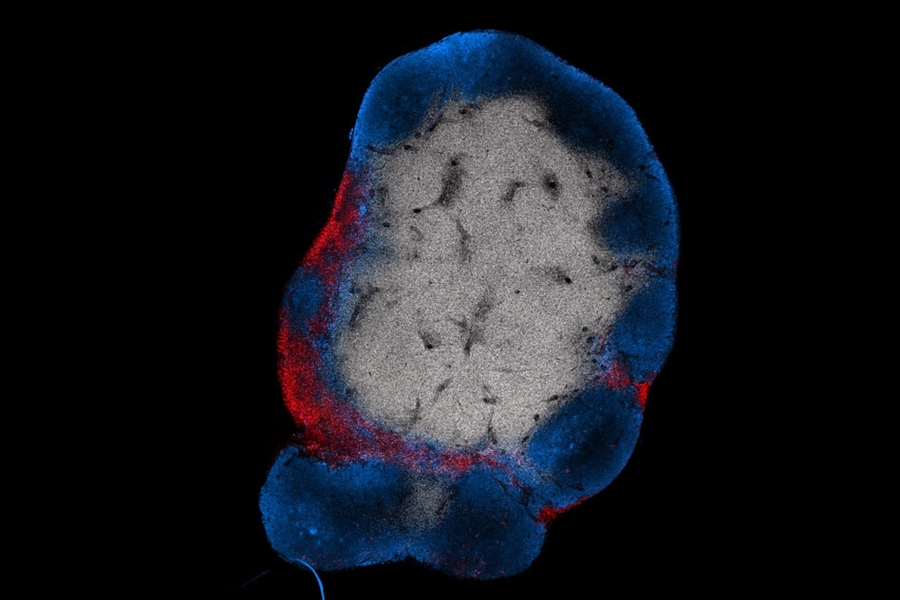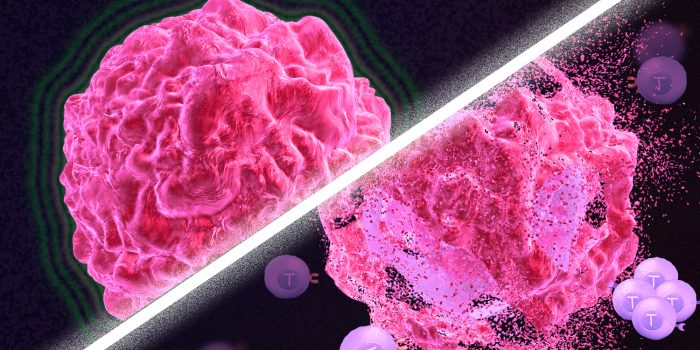Researchers at MIT have developed a unique way to treat the tumor cells by removing them from the body, applying chemotherapy through drugs on them, and then putting them back in the tumor. When delivered along with drugs that activate T cells, these injured cancer cells appear to act as a distress signal that activates the T cells.
“When you create cells that have DNA damage but are not killed, under certain conditions those live, injured cells can send a signal that awakens the immune system,” says Michael Yaffe, who is a David H. Koch Professor of Science, the director of the MIT Center for Precision Cancer Medicine, and a member of MIT’s Koch Institute for Integrative Cancer Research.
Yaffe and Darrell Irvine, who is the Underwood-Prescott Professor with appointments in MIT’s departments of Biological Engineering and Materials Science and Engineering, and an associate director of the Koch Institute, are the senior authors of the study, which appears in Science Signaling. MIT postdoc Ganapathy Sriram and Lauren Milling Ph.D. ’21 are the lead authors of the paper.

For trials, twenty-four hours after the treatment, the researchers added dendritic cells to each dish, followed 24 hours later by T cells. Then, they calculated how well the T cells were able to kill the cancer cells. It was found that most of the chemotherapy drugs didn’t work well and the ones that did, functioned at low doses were not enough to kill the tumor.
The critical factor here was cells that were injured by chemotherapy but were still alive.
“This describes a new concept of immunogenic cell injury rather than immunogenic cell death for cancer treatment,” Yaffe says. “We showed that if you treated tumor cells in a dish when you injected them back directly into the tumor and gave checkpoint blockade inhibitors, the live, injured cells were the ones that reawaken the immune system.”
The drugs that appear to work best with this approach are drugs that lead to DNA damage. When DNA damage occurs in tumor cells, it activates cellular pathways that respond to stress. These pathways send out distress signals that provoke T cells to leap into action and destroy not only those injured cells but any tumor cells nearby.
“Our findings fit perfectly with the concept that ‘danger signals’ within cells can talk to the immune system, a theory pioneered by Polly Matzinger at NIH in the 1990s, though still not universally accepted,” Yaffe says.

This treatment occurred to work for 40 percent of the mice when trialed on them. Also, when the researchers introduced cancer cells into these same mice several months later, their T cells recognized them and destroyed them before they could make new tumors.
The researchers also tried injecting DNA-damaging drugs directly into the tumors, instead of treating cells outside the body, but it was not as effective.
“You have to present something that can act as an immunostimulant, but then you also have to release the preexisting block on the immune cells,” Yaffe says.
This treatment is to be tested on the patients that have not responded to immunotherapy, but there is still some more work to be done.


